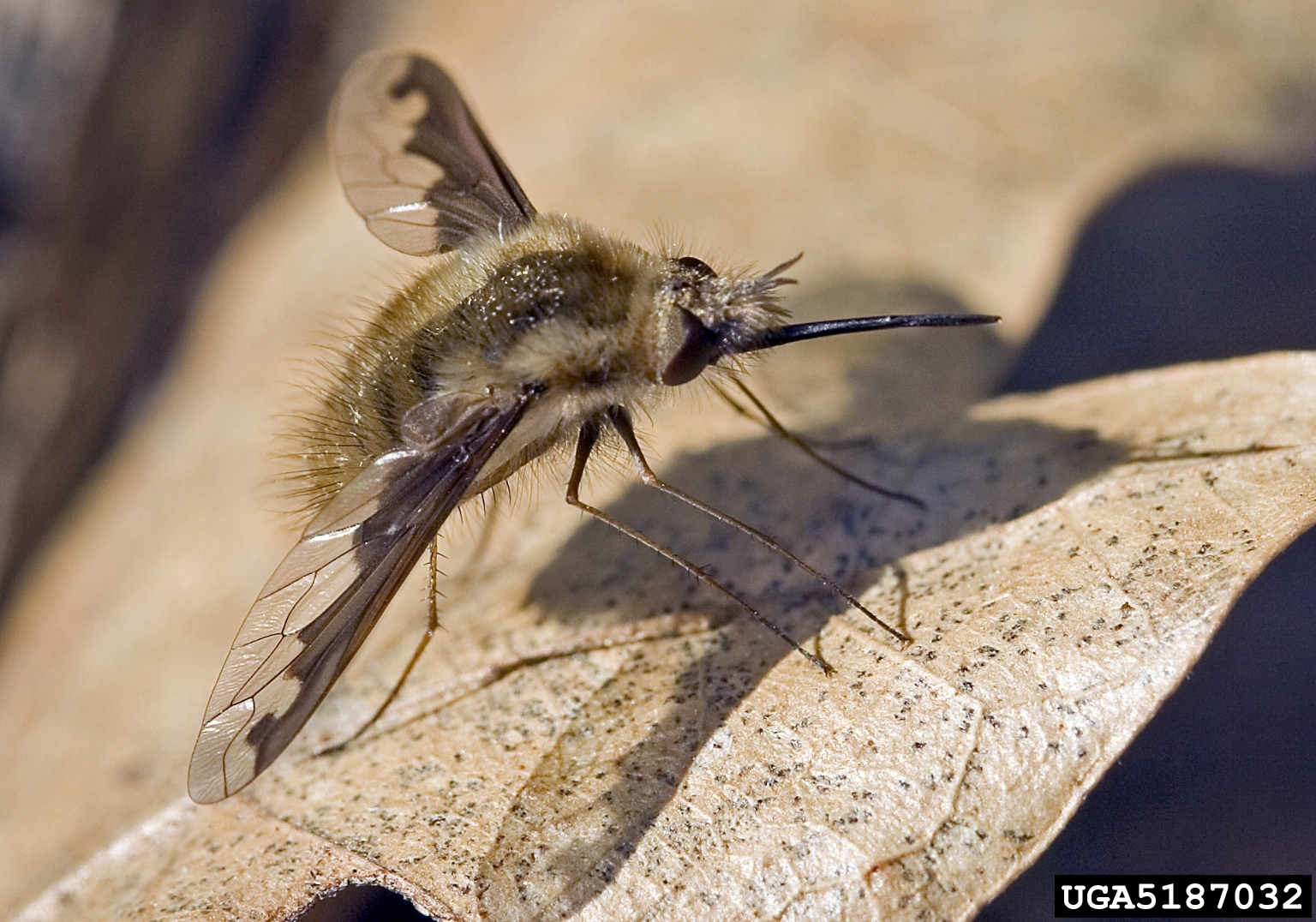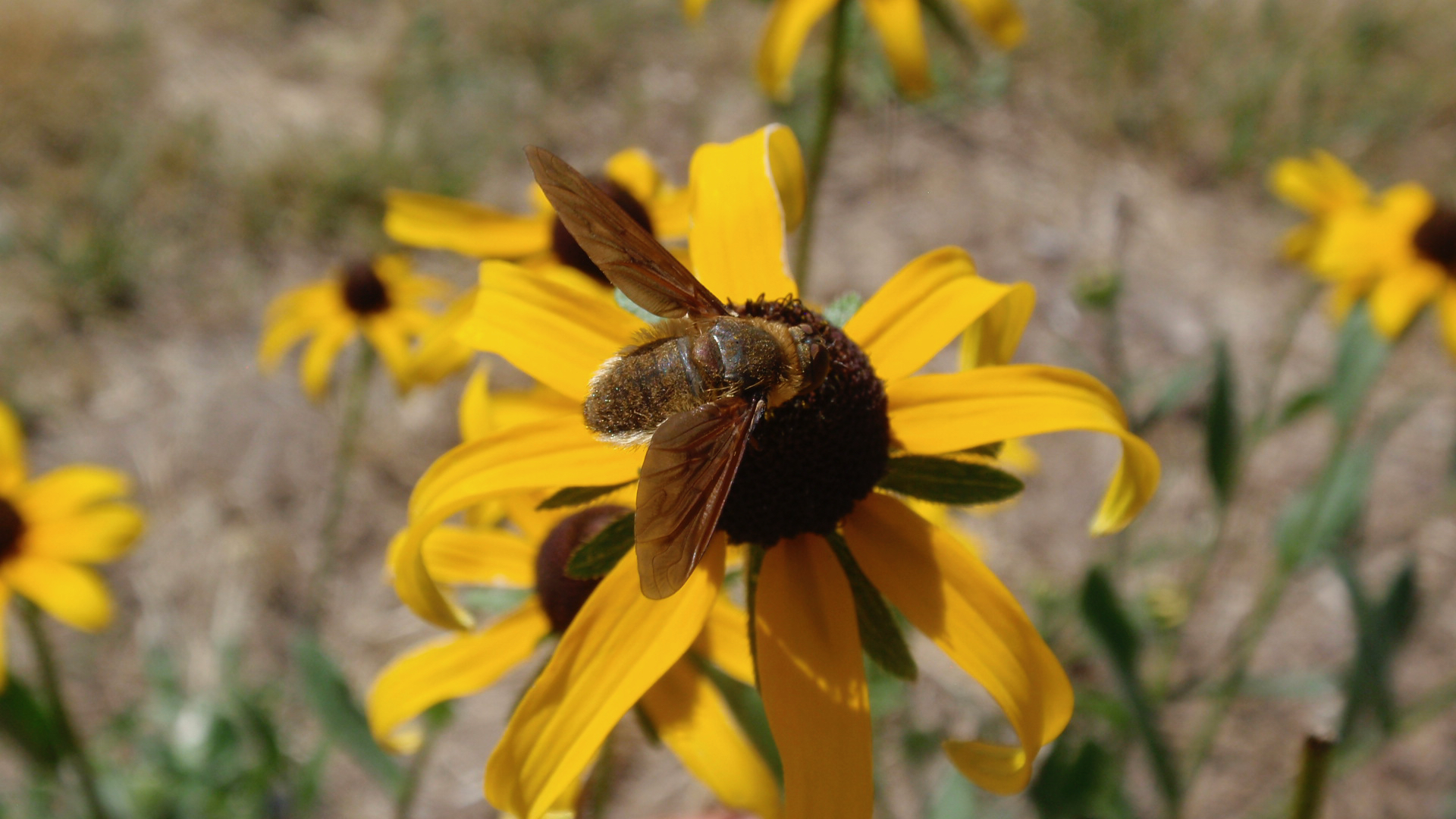Michigan insects in the garden – Week 5: Bee flies
Are these fuzzy flower visitors friend or foe?

In their adult stage, bee flies (family Bombyliidae) are fuzzy, black and yellow flies that sip nectar from flowering plants and are easily mistaken for actual bees. Meanwhile, behind the scenes, their immature stage is up to something a little more sinister.
Like all true flies, bee flies are in the insect order Diptera. This is a diverse group (over 25,000 species in North America) with a wide range of lifestyles and behaviors between their larval and adult life stages. Mosquitos (family Culicidae), for example, are dipterans that feed on blood as adults, but whose immature stage (larvae) live in the water. House flies (family Muscidae) live in or around human dwellings where their larval stage feeds on decomposing organic matter. Bee flies, in the immature stage, are parasites or predators of ground dwelling invertebrates ranging from beetles to grasshoppers and, of course, bees.
As adults, bee flies feed on nectar from flowers and they have a mouthpart that is adapted for the job. Their long proboscis is quite conspicuous, especially on the common early season species in the genus Bombylius.

These early spring species will often be seen on flowers or hovering around a sandy area looking for a ground nesting bee or wasp nest to lay an egg in. You might see one sitting on the ground for an extended period of time. They do this to collect sand into a special pouch in their abdomen. As they lay eggs, the eggs pass through this pouch and become coated with sand, presumably to offer camouflage and protection from predators.
When a bee fly egg hatches, a tiny larva called a planidium emerges. The planidium is quite unlike most fly larvae (also known as maggots); they are adapted for moving quickly in search of a host. Once the planidium finds a host, it will attach itself to the host’s exterior, like a leech or sea lamprey, and begin to feed. Yes folks, this is the stuff of nightmares.
Most of this activity takes place below ground, which makes bee flies very hard to study scientifically. To this day, we know relatively little. We do know that some bee fly larvae feed on the egg clusters of grasshoppers and locusts, which means they can contribute to pest control. However, we also know that many other species are parasites of solitary bee and wasp larvae. The good news is that most of them are not considered pests; they are just another part of the ecosystem in our yards, gardens, natural areas and agricultural fields.
Since they spend time visiting flowers, bee flies certainly contribute to pollination. Keeping flowers in your yard and avoiding applying pesticides to blooming plants are two ways you can help bee flies and other pollinators. You can learn more about how to help pollinators and other beneficial insects by visiting the Michigan State University Extension website Gardening in Michigan and clicking on the Pollinators tab.




 Print
Print Email
Email










